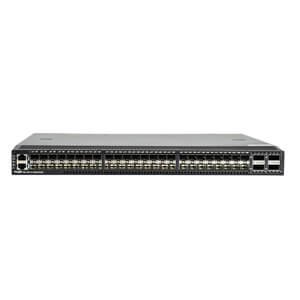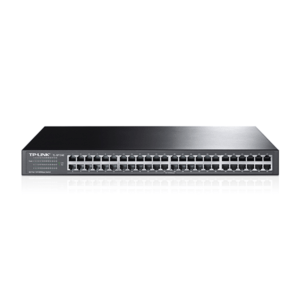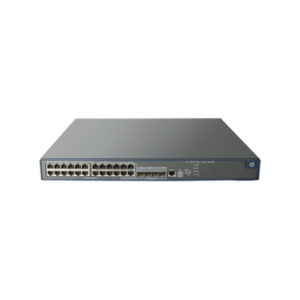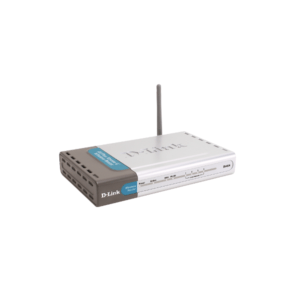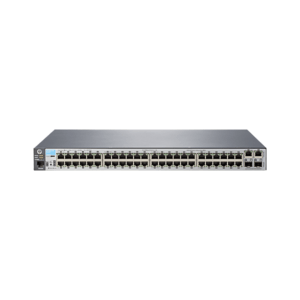Description
We give the best RG-S6110-48XS4QXS Switch price in Dubai. Also we are the top Ruijie distributors in Dubai.
Ruijie RG-S6110-48XS4QXS is a next-gen switch, offers multiservice ring remarkable performance, enhanced security and smart management. Implementing an industry-leading hardware design and Ruijie’s latest RGOS11.X modular operating system, the switches offer better table capacity, improved hardware processing performance, and easier user operation. We give the best Ruijie product support services in Dubai.
RG-S6110-48XS4QXS supports flexible Gigabit access and high-density 10G port. The switch offers fixed 48 10G fiber ports, supporting high-density, high-performance port uplink performance. These leading features fully meet requirements of high-density access and demanding aggregation.
RG-S6110-48XS4QXS, with the outstanding performance-to-price ratio, is ideal acting as aggregation of large-scaled networks, core of small to medium-sized networks. With the end-to-end service performance, and a wide range of security settings available, RG-S6110-48XS4QXS fully satisfies high-speed, secure and intelligent demands of enterprise networks.
Feature highlights of RG-S6110-48XS4QXS:
• Customized for Large Campus Network: Up to 48 x 10G BASE-X Ports and 4 x 40G BASE-X Uplink Ports
• Exceptional Performance: Up to 2.56Tbps Switching Capacity
• Network Virtualization: Virtual Switch Unit (VSU) Support
• Out-of-box with Advanced Layer 3 Routing and SDN Features
• High Reliability: Hot Patches, Power and Fan Redundancy Support
Model | RG-S6110-48XS4QXS |
|---|---|
Ports | 48 1G/10GBASE-X SFP+ ports 4 40G QSFP+ ports |
Expansion Slots | NA |
Modular Power Slots | 2 |
Fan Slots | 3 |
Expansion Modules | NA |
Management Ports | 1 console port |
Switching Capacity | 2560G bps |
Packet Forwarding Rate | 960Mpps |
Max. Number of 10GE Ports | 48 |
Max. Number of 40GE Ports | 4 |
Port Buffer | 9MB |
ARP Table | Up to 16K |
MAC Address | Up to 128K |
Routing Table Size | 16K/8K |
ACL Entries | Up to 1500 |
VLAN | Port based VLAN, MAC based VLAN, Super VLAN, Private VLAN, protocol based VLAN, IP subnet-based VLAN, GVRP |
QinQ | Basic QinQ, Flexible QinQ, 1:1 VLAN switching, N:1 VLAN switching |
Link Aggregation | Support LACP (802.3ad) |
Port Mirroring | Many-to-one mirroring, One-to-many mirroring, Flow-based mirroring, Over devices mirroring, VLAN-based mirroring, VLAN-filtering mirroring, AP-port mirroring, RSPAN, ERSPAN |
Spanning Tree Protocols | IEEE802.1d STP, IEEE802.1w RSTP, Standard 802.1s MSTP, Port fast, BPDU filter, BPDU guard, TC guard, TC protection, ROOT guard |
DHCP | DHCP server, DHCP client, DHCP snooping, DHCP relay, IPv6 DHCP snooping, IPv6 DHCP client, IPv6 DHCP relay |
Multiple Spanning Tree (MST) Instances | 64 |
Maximum Aggregation Port (AP) | Up to 2,048 |
SDN | OpenFlow 1.0 |
VSU (Virtual Switch Unit) | Support (up to 8 stack members,to ensure the effectiveness of the use, 4 members are recommended) |
L2 Features | MAC, ARP, VLAN, Basic QinQ, Felix QinQ, Link aggregation, Mirroring, STP, RSTP, MSTP, Broadcast storm control, IGMP v1/v2/v3 snooping, IGMP filter, MLD snooping, DHCP, Jumbo frame, RLDP, LLDP, REUP, G.8032 ERPS, Layer 2 protocol tunnel |
Layer 2 Protocols | IEEE802.3, IEEE802.3u, IEEE802.3z, IEEE802.3x, IEEE802.3ad, IEEE802.1p, IEEE802.1x, IEEE802.3ab, IEEE802.1Q (GVRP), IEEE802.1d, IEEE802.1w, IEEE802.1s |
Layer 3 Features | Static routing, RIP, OSPF, OSPF v3, BGP, BGP4+, RIP, RIPng, IS-IS, IS-IS v6 |
Layer 3 Protocols (IPv4) | Static routing, RIP, OSPF, IS-IS, BGP |
IPv4 Features | Ping, Traceroute, URPF, GRE tunnel (4 over 6), GRE tunnel (6 over 4), IPv4 VRF |
IPv6 Features | ICMPv6, IPv6 Ping, IPv6 Tracert, Manually configure local address, Automatically create local address, Neighbor Discovery, 0-64 bit mask, 65-128 bit mask, 6 over 4 manual tunnel, 6 to 4 auto tunnel, ISATAP, IPv4 over IPv6 tunnel, IPv6 over IPv6 tunnel, GRE tunnel (4 over 6), GRE tunnel (6 over 6), IPv6 VRF, IPv6 extender option head |
Basic IPv6 Protocols | IPv6 addressing, Neighbor Discovery (ND), ND-snooping, stateless automatic configuration, and Path MTU Discovery |
IPv6 Routing Protocols | Static routing, OSPF, OSPF v3, BGP, BGP4+, RIP, RIPng, IS-IS, IS-IS v6; Packet–based load balancing and flow-based load balancing |
IPv6 Tunnel Features | Manual tunnel, auto tunnel, IPv4 over IPv6, IPv6 over IPv6, GRE tunnel |
Multicast | IGMP v1/v2/v3, IGMP v1/v2/v3 snooping, IGMP proxy, IGMP filter, IGMP fast leave, Multicast routing protocols (PIM-DM, PIM-SM, PIM-SSM), MLD snooping, MLD, MSDP, Multicast static routing |
G.8032 | Support |
ACL | Standard IP ACL (Based on IP address); Extended IP ACL (Based on IP addresses and TCP/UDP port number); MAC-extended ACL (Based on source and destination MAC addresses and optional Ethernet type); Time-based ACL; Expert ACL (Based on the flexible combination of VLAN number, Ethernet type, MAC address, IP address, TCP/UDP port, protocol type, and time); ACL80; IPv6 ACL |
QoS | 802.1p/DSCP/TOS traffic classification; Multiple queue scheduling mechanisms, such as SP, WRR, DRR, SP+WRR, SP+DRR; RED / WRED; Input / output port-based speed limit; Port-based traffic recognition; Each port supports 8 queue priorities |
IPv6 ACL | Support |
Reliability | VSU (virtualization technology for virtualizing multiple devices into 1); GR for RIP/OSPF/BGP; BFD detection; ERPS (G.8032); REUP dual-link fast switching technology; RLDP (Rapid Link Detection Protocol); 1+1 power redundancy; Hot-swappable power module; and multiple configuration; Multiple firmware |
Security | Binding of the IP address, MAC address, and port address; Binding of the IPv6, MAC address, and port address; Filter illegal MAC addresses; Port-based and MAC-based 802.1x; MAB; ARP-check; DAI; Restriction on the rate of ARP packets; Gateway anti-ARP spoofing; Broadcast suppression; Hierarchical management by administrators and password protection; RADIUS and TACACS+; AAA security authentication (IPv4/IPv6) in device login management; SSH and SSH V2.0; BPDU guard; IP source guard; CPP, NFPP; Port protection |
Manageability | HTTP/HTTPS; SNMP v1/v2/v3; CLI (Telnet/Console); RMON (1, 2, 3, 9); SSH; FTP / TFTv6; Syslog; SPAN / RSPAN, NTP; SSHv6, Telnetv6, DNS v6; NTP for v6; Traceroute v6; Support sFlow |
Hot Patch | Support (the restart process does not affect the existing service forwarding) |
Smart Temperature Control | Auto fan speed adjustment; Fan malfunction alerts; Fan status check |
Other Protocols | FTP, TFTP, DNS client, DNS static |
Dimensions | 44.0 x 440 x 420 |
Rack Height | 1RU |
Weight | RG-S6110-48XS4QXS: 9.85KG (with 3 fans and without power supply) RG-M6110-AC460E-F: 1.68KG M6220-FAN II-F: 0.25KG |
MTBF | >200K hours |
Safety Standards | EN 60950-1 |
Emission Standards | EN 300 386, EN 55032, EN 61000-3-2, EN 61000-3-3, EN 55035, EN 61000-4-2, EN 61000-4-3, EN 61000-4-4, EN 61000-4-5, EN 61000-4-6, EN 61000-4-8, EN 61000-4-11 |
Power Supply | AC input: DC input: Frequency: 50Hz to 60Hz |
Power Consumption | <180W |
Temperature | Operating temperature: 0°C to 50°C |
Storage temperature: -40°C to 70°C | |
Humidity | Operating humidity: 10% to 90%RH |
Storage humidity: 5% to 95%RH | |
Operating Altitude | -500m to 5,000m |
●Aggregation layer of a large network, core layer of medium-sized network, and full Gigabit Layer 3 access of buildings in large enterprise or campus networks.
●The 48 fixed 10G BASE-X ports upgrade the network to a 10G uplink backbone to protect user investment.
●Strong security management mechanisms provide network security defense, high-security access control, and effective network access control.
Typical Application 1
As the aggregation layer switch of large campus network, RG-S6110 Switch Switches offers high-performance bandwidth link with 40G aggregation to core and higher bandwidth for the access device to meet the growing demand of user traffic.
Typical Application 2
The RG-S6110 Switch Switches can be deployed as core switches in small and medium enterprises. The VSU technology not only simplifies the network architecture, but also significantly improves the reliability and efficiency of the network system.

